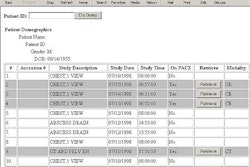Dear RIS Insider,
Integrating a RIS and a PACS is more than throwing a bunch of servers in a room, stringing some cable, and firing up a clutch of workstations. It’s really about bringing scheduling, order management, patient tracking, reporting, transcription, and billing into a single system.
In traditional RIS and PACS environments, multiple silos of information are created by the technologies such as a RIS server system, a PACS server system, and a reporting server system. Each maintains its own patient data, procedure data, order and exam data, reports, and history -- and each source must be reconciled at some point.
This architectural strategy can result in multiple data input points within a work area, often requiring similar information to be entered or verified at each system’s interface. The duplication of effort increases the opportunity for errors and produces inefficient and ineffective processes.
Behind the scenes, each server has its own data and equipment maintenance needs, and each has its own reporting and debugging infrastructure. When one of the systems gets an equipment or software upgrade, the next attempt to synchronize the systems can lead to unpredictable results.
In our featured article this month, RIS/PACS veteran Derek Schoonover describes what he believes should be the characteristics of an integrated RIS/PACS platform. As a RIS Insider subscriber, you have access to this story before other AuntMinnie members. To read more about unifying a RIS/PACS, go here.
Also, if there’s a RIS topic you’d like to see covered, or you would like to author an article about a RIS subject, please contact me at [email protected]. I look forward to hearing from you.


















